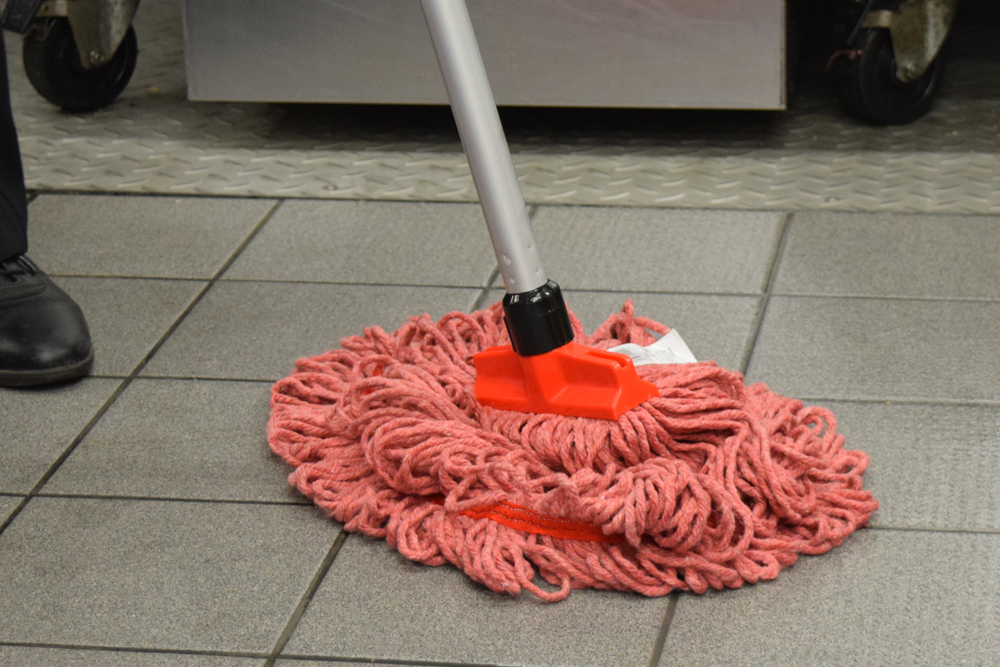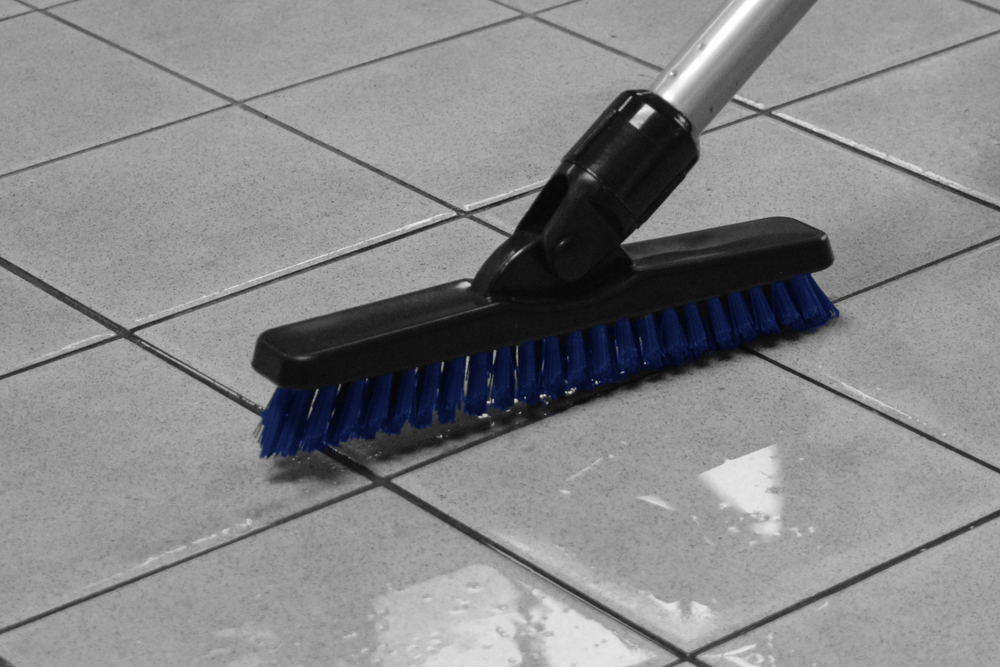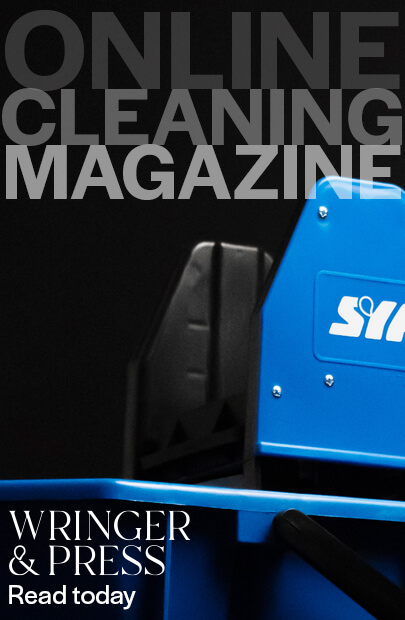
How to Clean Your Tiled Floors
Take care of your tiled floors with a few smart cleaning techniques that will keep your tiles and grout come up looking like new. Learn how to clean your tiled floors, how to clean tile grout, which cleaning products and tools to use and how often your floors need to be cleaned.
When it’s time to clean your tile floors, be sure to use the proper technique for your type of tile as the recommended cleaners and mops vary between materials. These are the best ways to clean your tile floors no matter what material it’s made of.
How to Clean Tiled Floors of All Types
While tile floors are incredibly durable, certain kinds of tile need to be cared for in a specific way. Ceramic and porcelain floor tiles are reasonably low maintenance, while coarse tiles such as marble, limestone, slate or granite require individualised care and often specialised cleaners.

How to Clean Ceramic and Porcelain Tiles
Ceramic and porcelain tiles are incredibly durable, and a few easy cleaning tips can keep these types of floors looking sparkling. Follow this simple process to clean ceramic and porcelain tile:
- Clean up loose debris: Sweep with a soft bristled brush or vacuum your tile floors regularly to keep them from getting dull. Ceramic tiles may be resistant to dirt, but sand and grit can dull the glazed surfaces.
- Choose the right floor mop: Clean tile with mild detergent and clean water using an Interchange Changer Mop. These mops are best for cleaning tiles because they have three cleaning surfaces so the extra surfaces can clean the dirty water saving it going into the grout lines, which would make them harder to clean. Be sure to change the water frequently while mopping; dirty water equals a cloudy floor.
- Be on the look for tile stains: If you find a discolouration, first try to determine what type of substance made the stain. Use the appropriate cleaner for the stain for the most effective clean.
- Watch for soap residue: If your tiles look hazy even after cleaning, you might be dealing with soapy residue. Remove the film with a nonabrasive all-purpose cleaner. You could also try a homemade cleaner with mild acid (such as fresh lemon juice) on ceramic or porcelain tiles (but never on stone tiles).
- Dry the tiles: Don’t let your glazed tile floors air-dry as the sitting water will form water spots. Take care of that by drying the floor with an Interchange Super Dry Mop immediately after washing.
How to Clean Resilient Tiles
Made from materials like vinyl, and linoleum, resilient tile is a great option if you want a surface that’s easy on the feet and needs minimal maintenance. Keep these tips in mind when cleaning your resilient tiled floors:
- Linoleum Tiles: Though it’s often mistaken for vinyl flooring, linoleum is a very different material that has specific cleaning requirements. After sweeping or vacuuming, wash the linoleum tile with linoleum flooring cleaning solution and water. Rinse clean and let the floor dry with a super dry mop. To protect your linoleum floors, apply a coat of wax or liquid wax and buff to a shine every 3 to 6 months.
- Vinyl Tiles: This super resilient flooring type is also easy to maintain. Simply sweep or vacuum up debris and mop with a vinyl cleaning solution or water and vinegar. Never use an abrasive cleaner or scrubbing tool on vinyl as it may scratch the surface.
How to Clean Stone Tiles
Be careful when you’re working with natural stone tiles like slate, granite or marble. Chemicals in traditional cleaners can damage the surface of these materials. Instead, clean your stone tiles with cleaners made specifically for natural stone.
- Granite Tiles: Like slate and marble tile, granite tile needs to be cleaned with a mild detergent that is pH-neutral. A harsh cleaner risks leaving streaks or discolouration on the tiles. You also may want to buff a polished granite floor to keep it looking shiny and clean.
- Slate Tiles: You may also use a mild detergent on slate tiles, as long as it doesn’t contain acidic properties, such as lemon or vinegar. If your slate tiled floor is coated, avoid water spots by drying the tile right away with a super dry mop.
- Marble Tiles: Marble makes stunning tiled floor, but it’s also high-maintenance. Avoid cleaning marble tiles with anything that has an acidic PH level. Cleaners with lemon or vinegar should be avoided, as they can etch the surface of the tile. Also stay away from anything that may scratch the marble, such as brushes with tough bristles or scouring pads.

How to Clean Tile Grout
The real secret to a great-looking tile floor is clean grout. Because grout is porous and absorbs grease and other stains, it can be tricky to keep clean. Here’s how to get your grout to look like new:
- Make a DIY grout cleaner: Skip commercial cleaners and instead make a paste of baking soda and water.
- Scrub grout: Rub it on the stain, let it sit overnight, then scrub the stain in the morning with a SYR Interchange Grout Brush (a metal brush will damage the grout). Repeat as necessary.
- Seal grout: Apply a silicone-based sealer to the grout to repel future stains. This works best when done 10-14 days after the grout is installed or renewed.
How Often to Clean Tiled Floors
To keep your tiles looking clean and residue-free, we recommend a regular cleaning schedule of both dry and wet cleaning.
- Dry clean: Vacuum or sweep at least once a week as part of your deep clean or whenever you can visibly see (or feel) debris. A soft-bristle vacuum attachment can be used on tile floors of any type, but it may be difficult to fit it into corners or tight spaces. Use a soft bristled SYR Interchange broom and lobby dustpan to finish the job.
- Wet clean: Plan to deep clean the tiled floors in your kitchen once every two weeks and your bathroom tiled floors once a week (germs tend to build up in bathrooms). Take the time to spot clean your grout once every few months or whenever it’s looking dingy.

